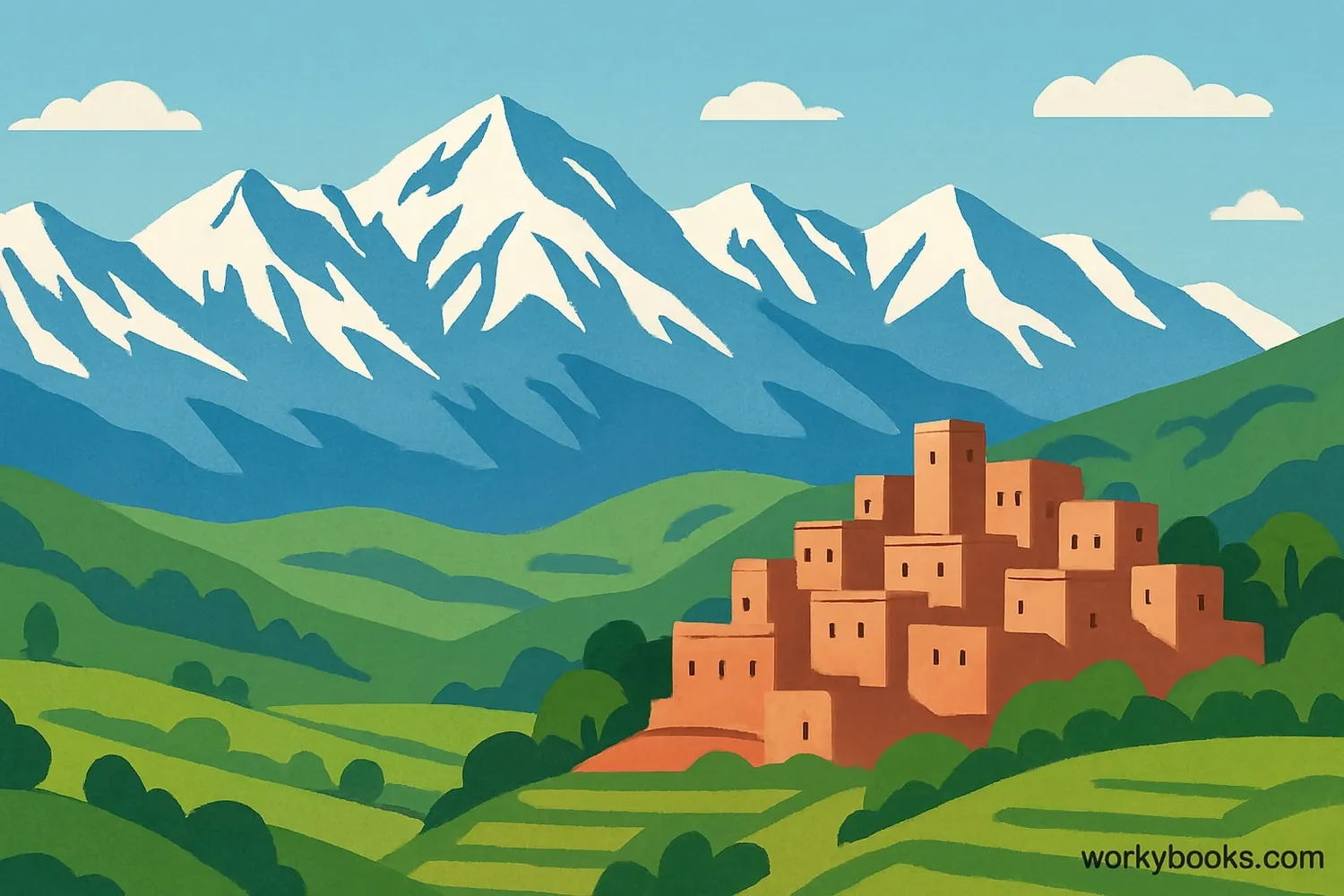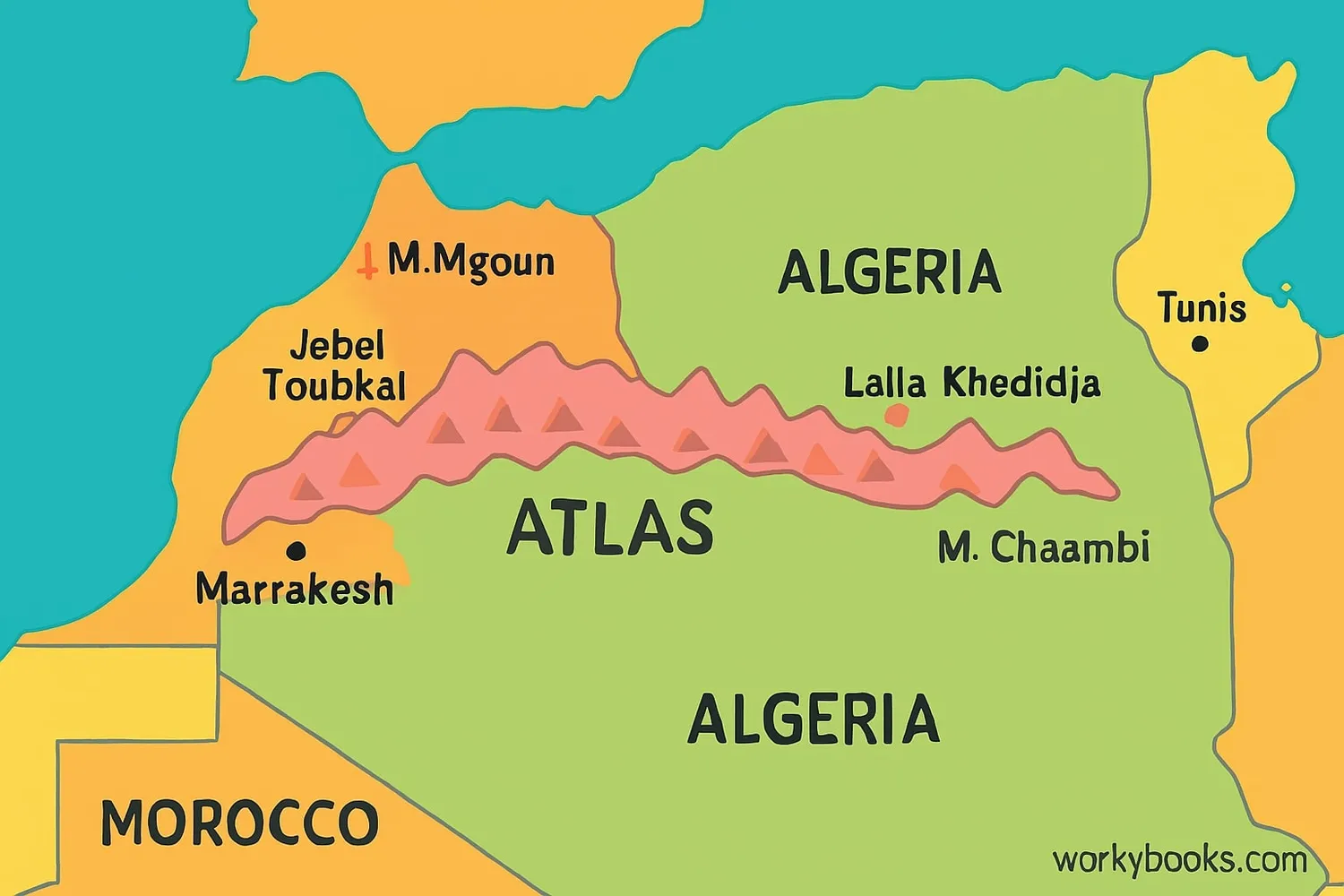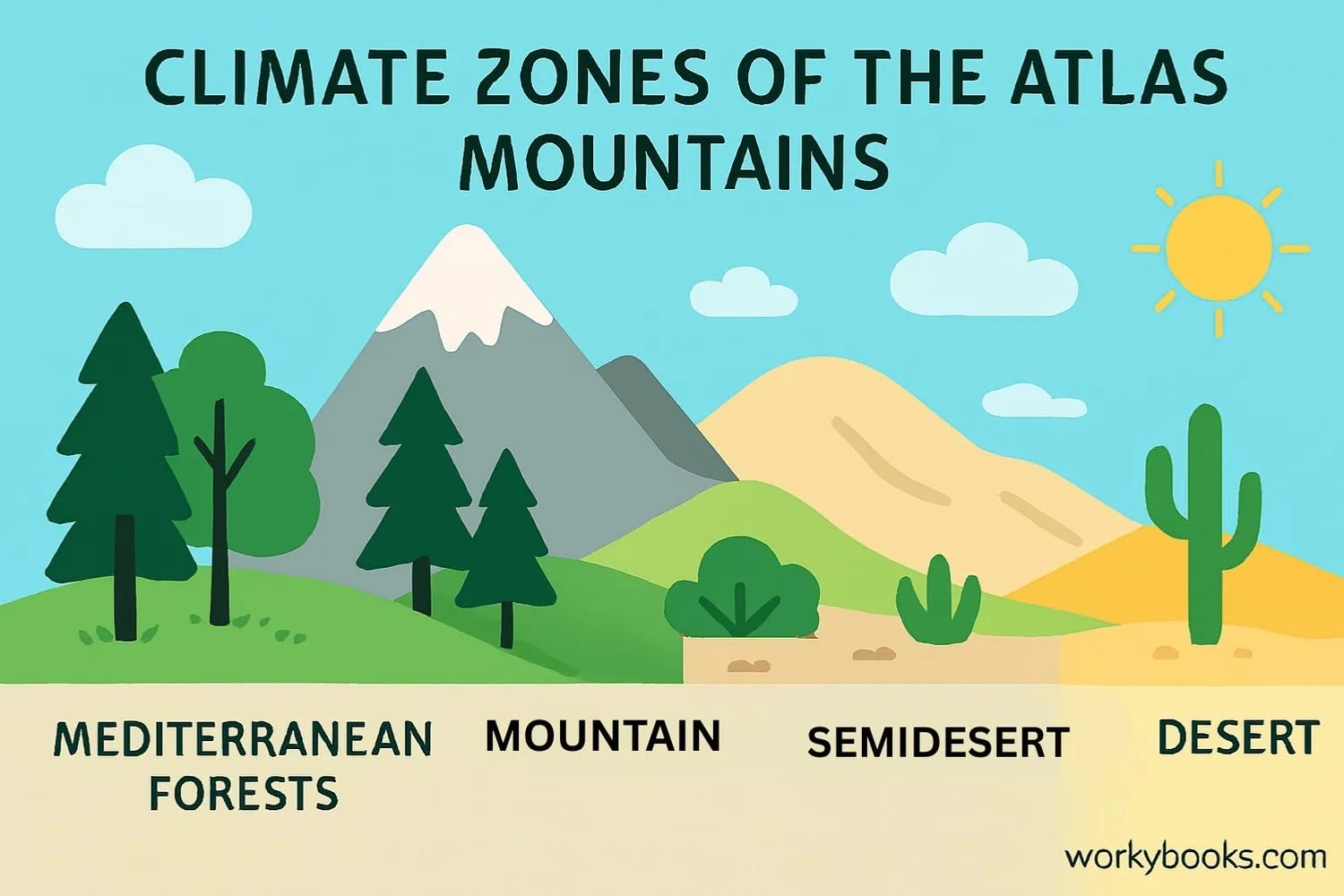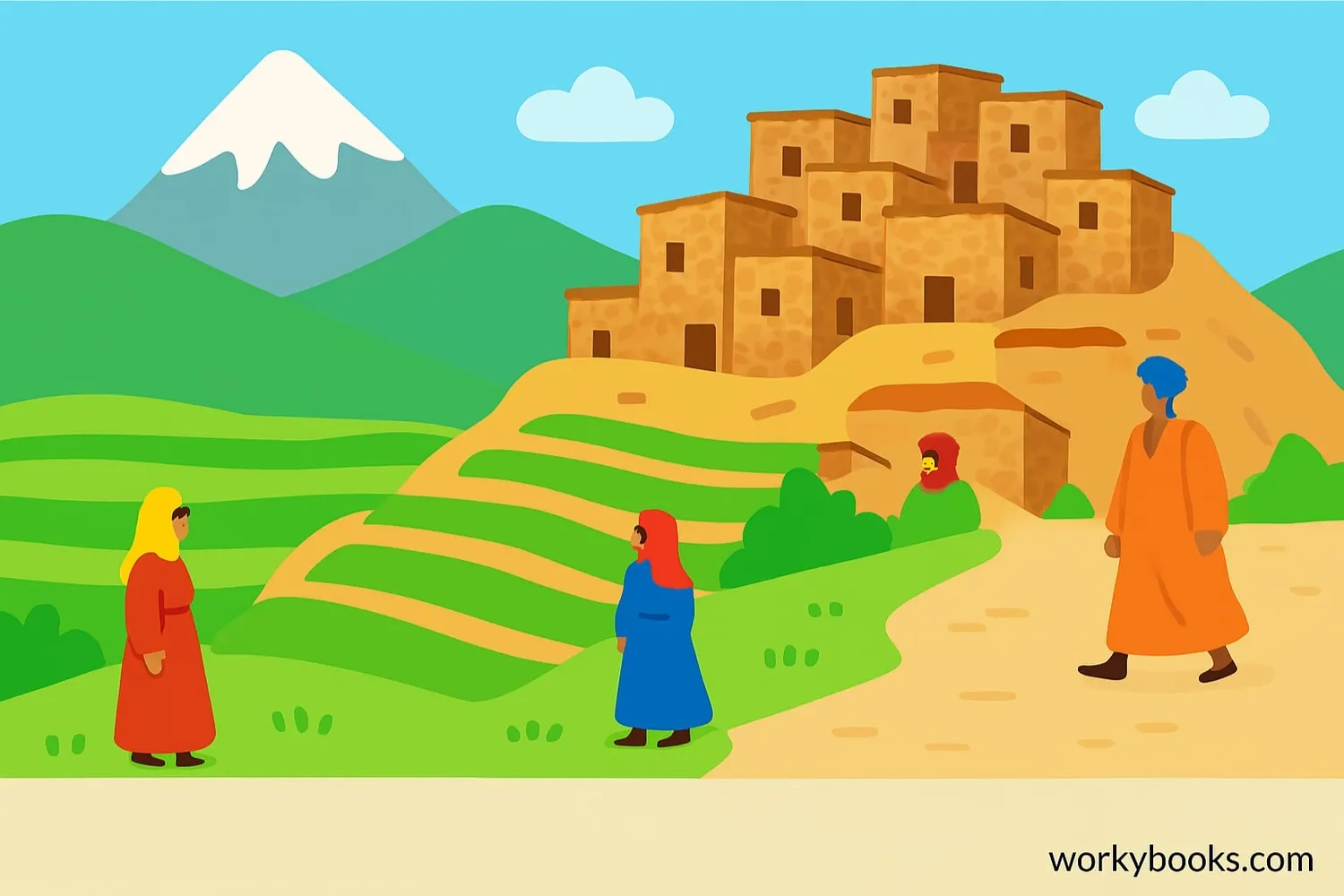Atlas Mountains - Definition, Examples, Quiz, FAQ, Trivia
Discover the amazing mountains stretching across Morocco, Algeria, and Tunisia!
What are the Atlas Mountains?

The Atlas Mountains are a mountain range in North Africa stretching across Morocco, Algeria, and Tunisia. They form a natural barrier between the Mediterranean Sea and the Sahara Desert. The name "Atlas" comes from ancient Greek mythology, named after the Titan Atlas who held up the sky.
These mountains are incredibly important because they:
• Create different climate zones
• Provide water to the region
• Are home to unique plants and animals
• Have been inhabited by people for thousands of years
Mountain Fact!
The Atlas Mountains stretch about 1,600 miles (2,500 km) across North Africa - that's longer than the entire west coast of the United States!
Geography & Geology

The Atlas Mountains consist of several parallel ranges:
Tell Atlas
Closest to the Mediterranean coast with green valleys
High Atlas
Highest peaks including Mount Toubkal (13,671 ft)
Saharan Atlas
Forms the northern edge of the Sahara Desert
How were they formed? The Atlas Mountains were created by the collision of the African and Eurasian tectonic plates about 80 million years ago. This slow collision pushed layers of rock upward to form these impressive mountains.
Geology Fact!
The Atlas Mountains are still growing today at about 1 millimeter per year due to tectonic activity!
Climate & Ecology

The Atlas Mountains create dramatically different climate zones:
Northern slopes: Receive Mediterranean climate with rainfall supporting forests of oak, pine, and cedar trees.
Southern slopes: Transition to dry, desert-like conditions with hardy shrubs and grasses adapted to little rainfall.
This variation creates unique habitats for wildlife including:
• Barbary macaque monkeys
• Atlas Mountain vipers
• Barbary sheep
• Endangered Atlas cedar trees
Water Towers!
The Atlas Mountains are called "water towers" because they capture rainfall and snow that provides water for millions of people in North Africa.
People & Culture

The Atlas Mountains have been home to Berber people for thousands of years. Berbers (who call themselves Amazigh) have developed unique cultures adapted to mountain living:
Mountain Villages
Traditional stone houses built on slopes with terraced farming
Traditional Foods
Tagines, couscous, and mint tea are staple foods
Crafts
Beautiful carpets, pottery, and metalwork
Today, the Atlas Mountains attract visitors for:
• Hiking and trekking adventures
• Cultural experiences in Berber villages
• Skiing in winter months
• Photography of stunning landscapes
Tourism provides important income for mountain communities while also creating challenges for preserving traditional ways of life.
Atlas Mountains Quiz
Test your knowledge about the Atlas Mountains with this 5-question quiz!
Frequently Asked Questions
Here are answers to common questions about the Atlas Mountains:
Amazing Atlas Mountains Trivia
Discover some fascinating facts about the Atlas Mountains:
Ancient Forests
The Atlas Mountains contain some of the last remaining forests of the endangered Atlas cedar, a tree species that can live for more than 1,000 years!
Movie Mountains
Parts of the Atlas Mountains stood in for the planet Arrakis in the 2021 film "Dune" because their desert landscapes look otherworldly!
Water Source
The Atlas Mountains provide up to 70% of Morocco's surface water supply through rivers that flow from the mountains to cities and farms.
Musical Mountains
Berber communities in the Atlas Mountains have unique musical traditions featuring instruments like the bendir (frame drum) and lotar (lute).


